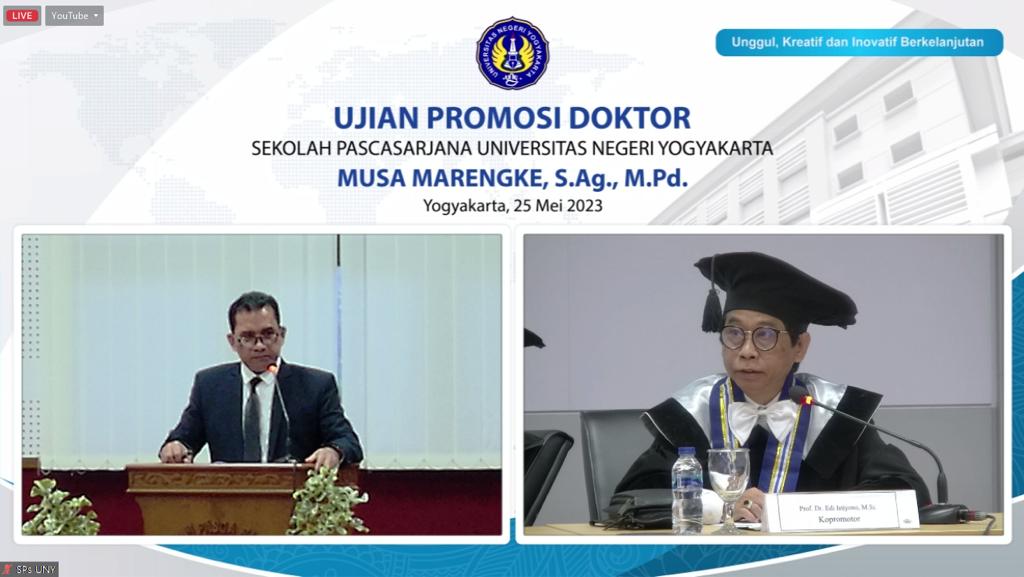You are here
SCHOOL CULTURE AND STUDENT QUALITY IN PUBLIC SENIOR HIGH SCHOOLS IN NORTH HALMAHERA DISTRICT (A MIXED SEQUENTIAL-EXPLORATORY METHOD STUDY)
Primary tabs

The development of digital technology, the industrial era 4.0, has resulted in a shift in trends in education. Not only the change in the learning process from conventional (face-to-face) to open, fast, and superficial learning characterized by "flexible learning" online education services but also in the educational governance and the culture of school citizens.
Therefore, Musa Marengke, a doctoral student of PEP, raised the title School Culture and Quality of State High School Students in North Halmahera Regency (A Mixed Sequential-Exploratory Method Research). This study aims to describe school culture and student quality, reveal components that contribute to school culture and student quality, reveal factors that influence school culture, reveal the influence of PKS, KAS, KSS, KP, KKS, DWS, and TG on school culture, reveal the impact of PKS, KAS, KSS, KP, KKS, DWS and TG on student quality, reveal the influence of school culture on student quality, reveal school culture as a mediator of the impact of PKS, KAS, KSS, KP, KKS, DWS, and TG on student quality and find strategies for structuring student quality.
This study used sequential exploratory mixed methods and was conducted in two stages: an investigation with qualitative methods and an experiment with quantitative methods. The research population was 2,827 students, while the sample amounted to 350 students. The data were collected using questionnaires, interviews, observations, focus group discussions, and documentation. The data were analyzed by following the reduction, display, verification, and data triangulation steps. Content validity through spread judgment, construct test through CFA test, and model fit: (1) Chi-Square, (2). P-value, (3) Root Mean Square Error of Approximation (RMSEA), and (4) Goodness of Fit Index (GFI). Hypothesis testing using t-test through Structural Equation Modeling (SEM) analysis.
The results of this study are as follows. (1) The school culture built by high school residents is a dynamic (positive) familiar culture with a cultural-participatory approach and proves that school culture and student quality have a strong relationship. (2) The components that contribute to school culture and student quality are perception, academic attitude, social attitude, learning activities, principal leadership, teacher responsibility, and discipline. (3) Factors that influence school culture are academic attitudes, social attitudes, and principal leadership. (4) The aspects of PKS, KAS, KSS, KP, KKS, DWS, and TG, in the majority, have a positive effect on school culture; that is, they have a strong impetus for the development of public high school culture. (5) The aspects of PKS, KAS, KSS, KP, KKS, DWS, and TG, in the majority, have a negative effect on student quality; that is, they have a weak impetus for the development of student quality. (6) School culture has a positive influence on student quality. (7) School culture is able to mediate the influence of PKS, KAS, KSS, KP, KKS, DWS, and TG on student quality. (8) Three strategic steps in organizing quality are: a) building academic culture, b) building social culture, and c) building principal leadership. (ant)
SEKOLAH PASCASARJANA UNY
Kampus Karangmalang, Yogyakarta 55281
Telp. +62274-550836 (front office)
Fax. +62274-520326 Email: pps@uny.ac.id, humas_pps@uny.ac.id
Website : http://sps.uny.ac.id
Copyright © 2024,



